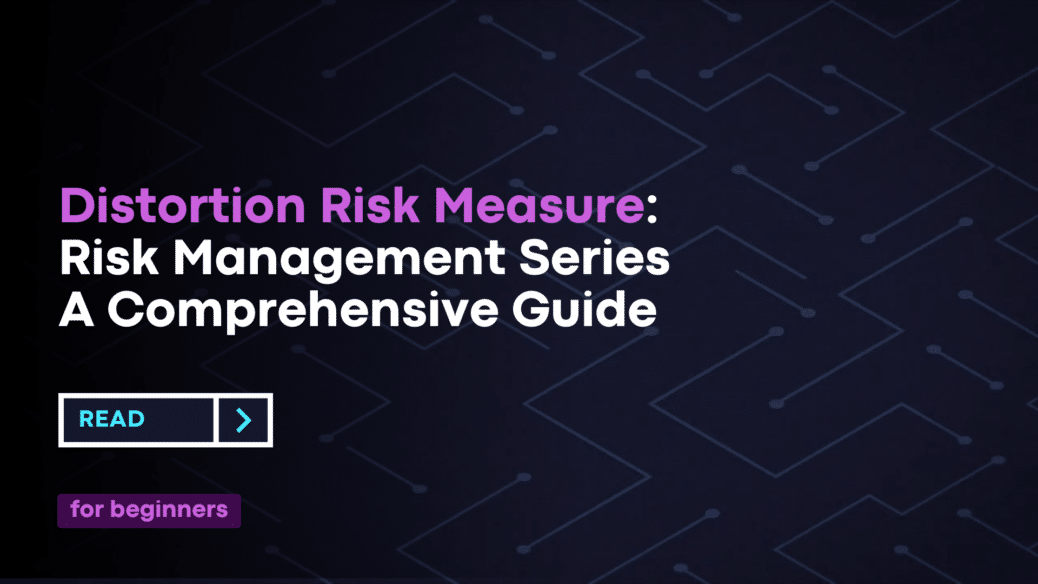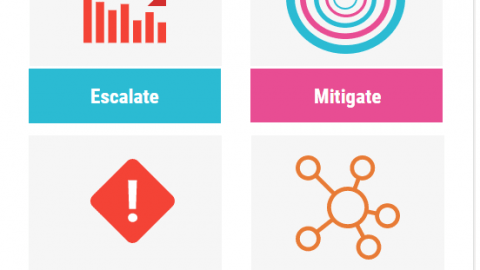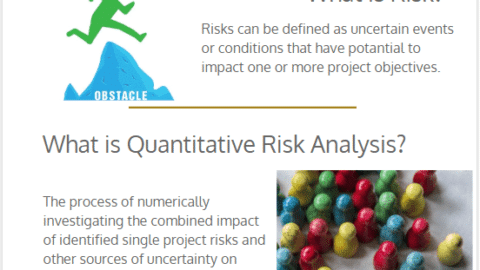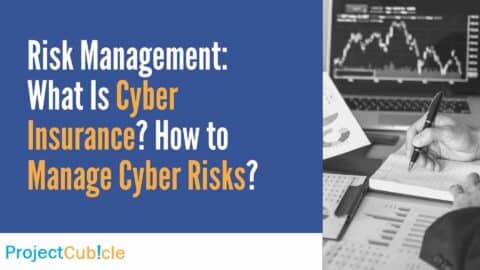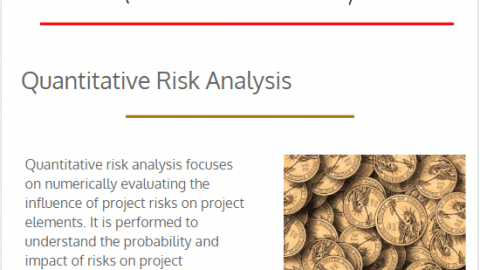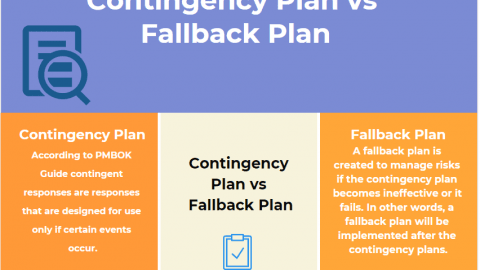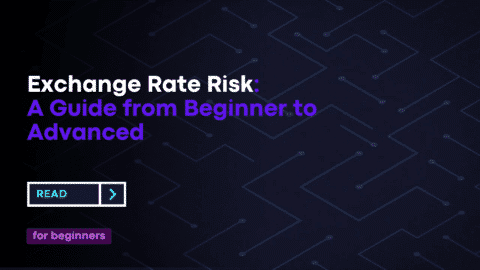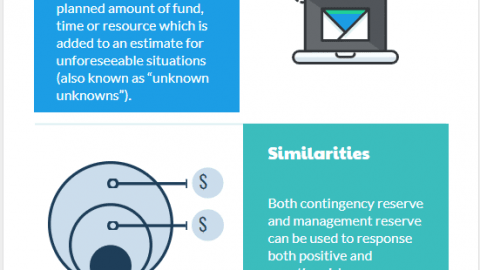Distortion Risk Measure: Risk Management – A Comprehensive Guide
Explore the concept of Distortion Risk Measure in risk management. Also, learn strategies, insights, and techniques to effectively manage risks and ensure optimal security for your business.
Table of Contents
Introduction
In today’s dynamic business landscape, risk management plays a pivotal role in ensuring the sustainability and growth of any organization. Navigating this complex world requires specialized tools and methodologies. One key aspect of risk management that deserves special attention is understanding and implementing the Distortion Risk Measure (DRM). This comprehensive guide will delve into the intricacies of Distortion Risk Measure in Risk Management, providing you with detailed insights and strategic methodologies to navigate the complexities of risk and security.
Distortion Risk Measure: An Overview
Distortion Risk Measure, commonly referred to as DRM, is a critical metric used in risk management to evaluate and mitigate potential threats to a company’s financial stability, reputation, and overall well-being. Unlike traditional risk assessment methods like VAR (Value at Risk) or standard deviation, DRM focuses on identifying and quantifying the extent of distortion in financial data due to external factors such as market volatility, geopolitical tensions, or natural disasters.
Simple Way: Distortion Risk Measure
In finance or insurance, you often want to know how risky an investment or policy is. There are traditional ways to measure this risk, like Value-at-Risk (VaR) and Expected Shortfall, but they have some limitations. Distortion Risk Measure is another way to measure risk that offers more flexibility. Also, it lets you adjust the measure based on how you personally feel about risk—whether you’re someone who wants to play it very safe or someone who’s willing to take on more risk for potentially higher rewards.
Think of it like adjusting the bass and treble on your stereo. Traditional risk measures are like pre-set sound modes (e.g., “Rock,” “Jazz,” “Classical”). Distortion Risk Measures allow you to create your own custom sound setting based on your preferences. Also, this custom setting is made using something called a “distortion function.” It’s a mathematical tool that allows you to say, “I care a lot about not losing too much money, so I’ll set this function to make big losses look even worse in my measure.” Or conversely, “I’m willing to take some chances for big gains, so I’ll set the function to downplay the impact of potential losses.”
So, in summary, a Distortion Risk Measure is like a customizable risk gauge. Also, it allows you to tweak how different outcomes are weighted based on your own attitude towards risk. This makes it a useful tool for people and organizations to use when they’re assessing investments, insurance policies, or any other types of financial decisions that involve risk.
The Significance of DRM
The importance of Distortion Risk Measure lies in its ability to capture the impact of unforeseen events or black swans on an organization’s financial health. By analyzing various scenarios and their potential consequences, businesses can proactively develop strategies to counteract distortions and maintain stability. Also, this approach allows for more nuanced risk assessment and better contingency planning, making DRM an indispensable tool for modern businesses.
The Role of Risk Management
Effective risk management is the cornerstone of any business success. Also, it involves a proactive approach to identifying, assessing, and mitigating potential threats that could hinder the achievement of organizational objectives. Within this framework, Distortion Risk Measure serves as a powerful tool for risk identification and management, offering a granular understanding of how external factors can impact a company’s financial data.
Value-at-Risk (VaR)
- What it tells you: VaR gives you a single number that says, “With X% confidence, you won’t lose more than this amount over a specific time period.”
- Advantages:
- Easy to understand.
- Widely used, so it’s a common language many investors speak.
- Disadvantages:
- Doesn’t tell you anything about how bad losses could be beyond that point.
- Not ‘coherent’: It doesn’t always behave in ways you’d expect when combining different risks.
- May encourage risk-seeking behavior in some instances because it only considers losses up to a certain point.
Distortion Risk Measures
- What it tells you: This approach gives you a more customized view of risk by applying a “distortion function” to the full range of possible losses. In simple terms, this function allows you to place more or less emphasis on different levels of loss according to your specific risk preference.
- Advantages:
- More flexible and can capture different attitudes toward risk.
- Can give a more complete picture of risk by considering the entire range of possible outcomes, not just the worst-case scenarios.
- Can be tailored to fit regulatory requirements or specific risk concerns of an investor.
- Disadvantages:
- More complicated to understand and implement.
- The choice of distortion function can be somewhat arbitrary, meaning different people might pick different functions and get different results.
So if you’re looking for a quick, easy-to-understand measure, VaR might be the way to go. But if you want a more nuanced understanding of risk that can be tailored to your specific concerns, then Distortion Risk Measures offer that flexibility.
Implementing DRM Strategies
Incorporating Distortion Risk Measure into your risk management strategy involves several key steps:
- Data Collection and Analysis: Gather relevant financial data, like income statements, cash flow, and balance sheets. Analyze this data using statistical tools to identify patterns, trends, and potential areas of distortion.
- Scenario Modeling: Develop various hypothetical scenarios that could lead to financial distortion. Also, these could range from economic downturns and supply chain disruptions to regulatory changes and cyber threats.
- Quantification of Risk: Assign quantitative measures, such as probability and impact scores, to different scenarios to estimate their potential effects on key financial metrics like liquidity, profitability, and solvency.
- Risk Mitigation Planning: Formulate strategies to minimize the impact of identified distortions. Also, this may include diversifying investments, adopting new technologies for better data analytics, adjusting business processes, or creating contingency funds.
- Regular Monitoring: Continuously monitor financial data, market trends, and regulatory updates. Also, assess the effectiveness of mitigation strategies and adjust your approach as new information becomes available.
Applying DRM in Different Industries
Distortion Risk Measure is not industry-specific; it’s a versatile tool applicable across various sectors, each with its own unique set of challenges and opportunities:
- Financial Services: Banks, investment firms, and insurance companies can use DRM to anticipate market fluctuations, regulatory changes, and economic shifts, adjusting their portfolios and strategies accordingly.
- Manufacturing: For manufacturers, DRM helps in identifying vulnerabilities in supply chain, operations, and demand planning. Also, this enables them to develop agile production and distribution models.
- Technology: In the tech industry, companies can use DRM to navigate uncertainties related to technological advancements, data security issues, and changing consumer preferences.
Distortion Risk Measure: FAQs
- What is Distortion Risk Measure?
Distortion Risk Measure (DRM) is a specialized metric in risk management used to assess and mitigate potential financial distortions caused by external factors. - How does DRM differ from traditional risk assessment?
Unlike traditional risk assessment tools, DRM focuses specifically on quantifying the extent of distortion in financial data due to unforeseen or catastrophic events. - Can DRM be applied to small businesses?
Absolutely, DRM is scalable and can be adapted to businesses of all sizes to anticipate and manage potential financial risks. - What are the key steps in implementing DRM strategies?
The essential steps include data collection and analysis, scenario modeling, quantification of risk, risk mitigation planning, and continuous monitoring. - Is DRM only relevant to financial risks?
No, the applicability of DRM extends beyond just financial risks, making it versatile for various industries including finance, manufacturing, and technology. - How often should DRM strategies be reviewed?
It’s advisable to regularly review and update DRM strategies, especially in response to significant market changes, regulatory shifts, or internal developments within your organization.
Conclusion
In the fast-paced and unpredictable landscape of modern business, effective risk management is more crucial than ever for achieving sustained growth and success. Distortion Risk Measure: Risk Management offers a proactive, focused approach for identifying, quantifying, and mitigating potential financial distortions. By incorporating DRM strategies into your comprehensive risk management framework, you not only enhance your ability to navigate through uncertainties but also empower your organization to make informed decisions that secure a prosperous future.
Hello, I’m Cansu, a professional dedicated to creating Excel tutorials, specifically catering to the needs of B2B professionals. With a passion for data analysis and a deep understanding of Microsoft Excel, I have built a reputation for providing comprehensive and user-friendly tutorials that empower businesses to harness the full potential of this powerful software.
I have always been fascinated by the intricate world of numbers and the ability of Excel to transform raw data into meaningful insights. Throughout my career, I have honed my data manipulation, visualization, and automation skills, enabling me to streamline complex processes and drive efficiency in various industries.
As a B2B specialist, I recognize the unique challenges that professionals face when managing and analyzing large volumes of data. With this understanding, I create tutorials tailored to businesses’ specific needs, offering practical solutions to enhance productivity, improve decision-making, and optimize workflows.
My tutorials cover various topics, including advanced formulas and functions, data modeling, pivot tables, macros, and data visualization techniques. I strive to explain complex concepts in a clear and accessible manner, ensuring that even those with limited Excel experience can grasp the concepts and apply them effectively in their work.
In addition to my tutorial work, I actively engage with the Excel community through workshops, webinars, and online forums. I believe in the power of knowledge sharing and collaborative learning, and I am committed to helping professionals unlock their full potential by mastering Excel.
With a strong track record of success and a growing community of satisfied learners, I continue to expand my repertoire of Excel tutorials, keeping up with the latest advancements and features in the software. I aim to empower businesses with the skills and tools they need to thrive in today’s data-driven world.
Suppose you are a B2B professional looking to enhance your Excel skills or a business seeking to improve data management practices. In that case, I invite you to join me on this journey of exploration and mastery. Let’s unlock the true potential of Excel together!
https://www.linkedin.com/in/cansuaydinim/

